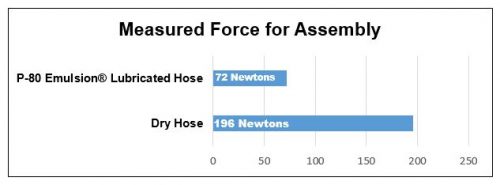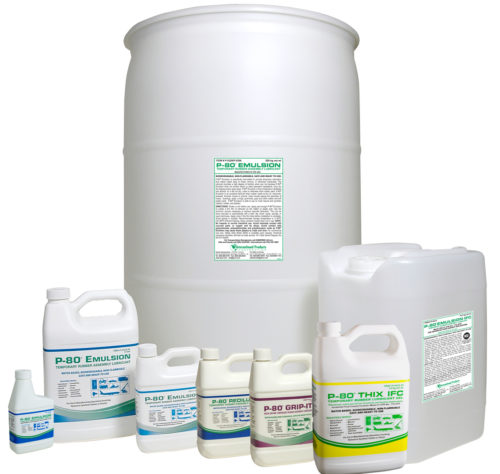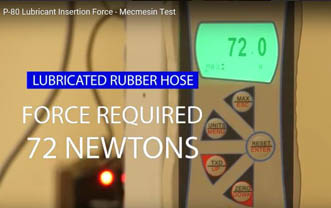Stop Struggling … See How Temporary Lubricants Make Rubber Assembly Easier!
Tweet
 Print
Print
Have you ever struggled with rubber assembly? If so, you’ve probably experienced for yourself the excessive force needed to properly install hoses, seals, gaskets, O-rings and many other rubber parts. Wouldn’t it be nice if someone came up with a better way?

Your wishes have been granted! Temporary rubber assembly lubricants were developed specifically to solve this common problem. Temporary rubber lubricants can ease assembly processes and significantly reduce the force needed to assemble rubber parts.
So, how effective are temporary assembly lubricants? Why not see for yourself? International Products Corporation (IPC), manufacturer of P-80® temporary rubber assembly lubricants, put together this short video showing the reduction in force obtained by using P-80® Emulsion to assemble a rubber hose.
The results of this test are dramatic. A 63% reduction of force was achieved by using P-80 Emulsion for this assembly. A digital force gauge manufactured by Mecmesin was used for measurement. The amount of force needed to assemble a dry piece of hose was 196 Newtons. IPC’s test lab then lubricated the same hose with P-80 Emulsion and the amount of force needed for the same assembly dropped to 72 Newtons. That represents a reduction of force of 124 Newtons or 63%.

What are some of the advantages of reducing the force required to install rubber parts?
• Allow for tighter fitting part design
• Improve product performance
• Increase production rates by allowing for faster assembly
• Reduce worker injuries by decreasing the assembly force required
• Reduce part rejection
The next time you’re having trouble with hoses, seals, gaskets, O-Rings or any other rubber part, remember to use a temporary rubber assembly lubricant and watch the parts slide into place with much less force. Temporary lubricants are ideal for rubber assembly because they reduce the friction needed to assemble parts.
Want more information about temporary rubber assembly lubricants, including how to use them and factors to consider when choosing a lubricant? Contact IPC for help finding the best solution for your assembly needs.

Tweet
 Print
Print
